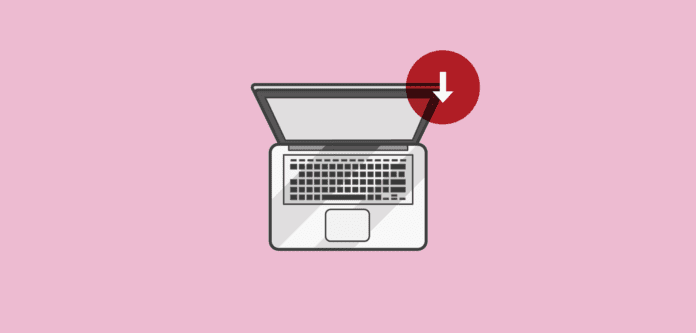They are saying progress solely occurs once you get out of your consolation zone, which is why I at all times attempt to stay optimistic within the face of main change. In any case, change drives creativity and innovation—and for bodily therapists, that interprets to raised and extra accessible care for each affected person. However let’s get actual for a second: change may also be troublesome. For each constructive, there’s certain to be a unfavourable, however acknowledging that there shall be challenges makes it simpler to deal with these difficulties once they come up. With that in thoughts, I wish to discuss just a few pitfalls related to telehealth for physical therapy (and find out how to handle them):
1. It’s actually not “hands-on.”
Whereas most features of a telehealth go to aren’t too completely different from an in-person go to, PTs must navigate just a few distinctive challenges as a result of historically hands-on nature of their care. As WebPT’s Director of Product Administration Scott Hebert, DPT, defined throughout a recent telehealth webinar, “For handbook therapists on the market who wish to get their palms on a affected person, this does take some studying. Finally, your creativity is what’s going that will help you right here.”
The Repair: Get inventive with final result assessments.
Hebert recommends taking benefit of purposeful motion assessments in addition to patient-reported final result assessments—and asking sufferers questions on their consolation and ease whereas performing every motion. “Primary purposeful motion patterns are tremendous straightforward to make the most of. Simply by doing these issues, we are able to determine [for example] if there’s weak spot in a single hip versus the opposite and begin making suggestions for our final evaluation.”
2. Sufferers might not purchase in instantly.
Adapting to new expertise isn’t second nature to everybody. Whereas many sufferers leap on the likelihood to take benefit of distant providers and the comfort they provide, others could also be hesitant to strive one thing that pushes them out of their consolation zone. This may be particularly difficult for sufferers who’re much less skilled utilizing a pc.
The Repair: Experiment with a hybrid mannequin.
It’s possible you’ll must do some convincing to get sure sufferers on board with making an attempt this methodology of care supply, and which will require just a little creativity in your half. One various may very well be providing a hybrid mannequin the place you assess the affected person in individual for the preliminary go to (and any subsequent progress updates and reevaluations) and solely use the telehealth choice for common remedy classes.
Even should you do every little thing proper, there’ll at all times be some sufferers who need in-person remedy completely. Finally, you need your sufferers to really feel comfy with any and all care you ship—regardless of the way you ship it. So, some sufferers might merely be higher suited to onsite appointments.
3. There’s a interval of adjustment.
Once you’re first implementing telehealth services, your sufferers gained’t be the one ones adapting to new expertise. Your suppliers and entrance workplace workers may also require coaching on scheduling greatest practices, system setup, and new software program performance. You may additionally must get buy-in out of your staff.
The Repair: Create an open dialogue together with your workers.
To handle this, make sure you put aside a while to speak together with your workers and handle questions like:
- Why is telehealth necessary to what you are promoting?
- How can telehealth be an efficient remedy choice for sufferers?
- What sorts of sufferers/situations are (or aren’t) applicable for telehealth?
- How will your staff use your new expertise?
- How ought to clinicians deal with frequent affected person expertise points?
Even after you’ve skilled your workers, there’ll inevitably be hiccups to your course of, and you could want to regulate issues accordingly. Nonetheless, being proactive about coaching might help clean many of these potential bumps within the highway.
4. It depends on non-clinical abilities.
Earlier than the rise of telehealth, bodily therapists already had many abilities of their proverbial toolbox. However with the introduction of digital providers, many PTs will notice that some of their non-clinical abilities are both underdeveloped or nonexistent. Telehealth requires suppliers to suppose creatively and leverage their communication abilities to evaluate the affected person. On prime of that, PTs who’ve shortly adopted telehealth have needed to study the ins and outs of video name etiquette as they go. As WebPT Co-founder and Chief Medical Officer Heidi Jannenga, PT, DPT, ATC, mentions here, “Once you meet with sufferers in individual, you don’t have to fret about this kind of factor, since you hear the identical issues the affected person does, so you understand when to talk up or shut a door. However making these changes on the fly is hard when you may’t hear what the affected person hears—and a small noise in your finish would possibly sound like a blaring, crackly mess on the affected person’s finish.”
Furthermore, PTs who present digital providers additionally tackle the position of technical help. When sufferers wrestle with their system or expertise points with the software program, it’s as much as the supplier to troubleshoot.
The Repair: Conduct mock remedy classes together with your staff.
To organize your staff for the distinctive complexities that may come up throughout digital therapies, we strongly advise conducting mock classes with fellow clinicians in addition to creating useful sources. This could alleviate lots of anxiousness that comes with diagnosing and addressing shock technical issues and instill a degree of consolation and familiarity with treating sufferers remotely.
5. Not all instruments are safe.
Lastly, there’s the difficulty of affected person privateness and compliance. As regulatory legal professional Emily Wein notes in this article, “Your laptop, your iPad, your iPhone, or no matter interface or kiosk you have got at your employer—these are all potential gadgets that might retailer or transmit your private well being info.”
The Repair: Guarantee your WiFi community, gadgets, and software program are safe.
Because of this, it’s completely important to make sure your gadgets are related to a personal and safe Wi-Fi connection and that therapists transmit any supplies containing PHI through a safe portal.
Talking of safety, it’s necessary that your video platform meets all HIPAA compliance requirements. For those who—like many different practices—carried out telehealth in response to the COVID-19 pandemic, there’s an opportunity your software program doesn’t meet the same old safety necessities, as federal payers temporarily offered some wiggle room in terms of compliance. Nonetheless, suppliers ought to anticipate these relaxations to be rolled again finally, so no matter video platform you select ought to be utterly HIPAA safe. (Even higher if it really works instantly together with your present EMR, like WebPT Virtual Visits does.)
Change is commonly vital, but it surely may also be nerve-wracking and fraught with obstacles. Must you make telehealth a everlasting fixture in your bodily remedy follow, it’s necessary to acknowledge the related difficulties so you may higher put together and make sure the transition goes as easily as potential. In any case, most of your sufferers are new to this course of, too, and so they’re seeking to you for steerage and help. Are you prepared?






